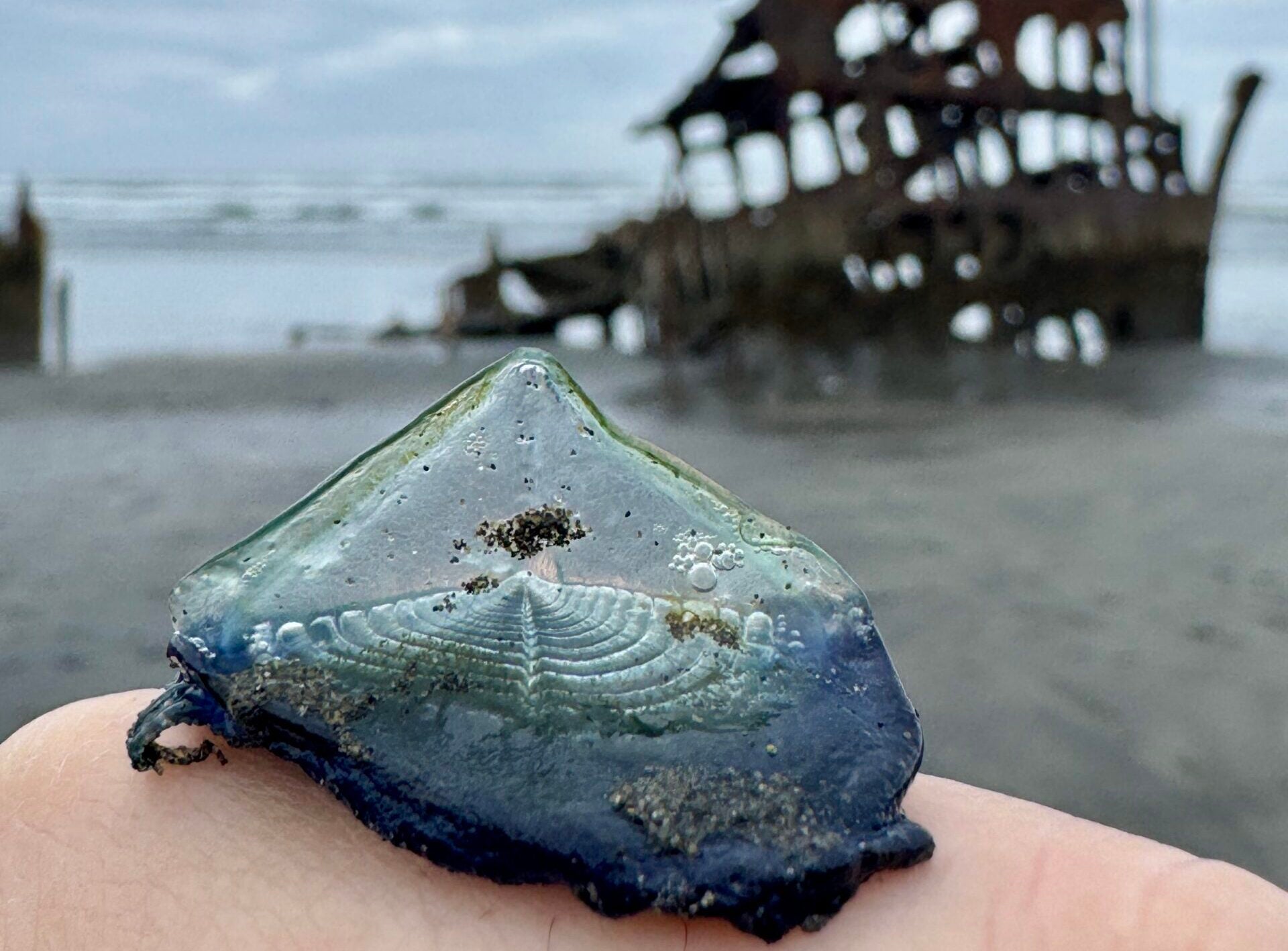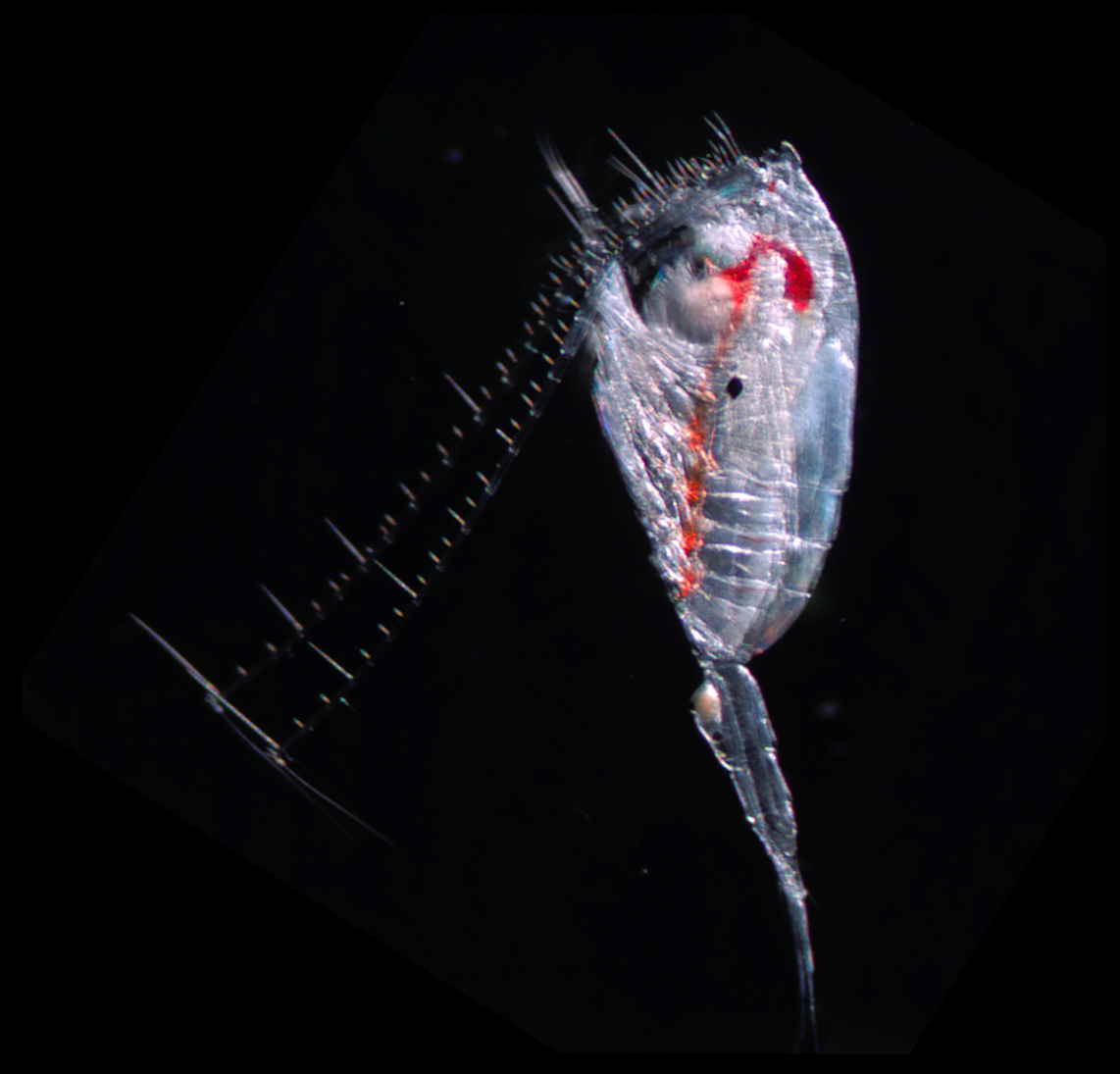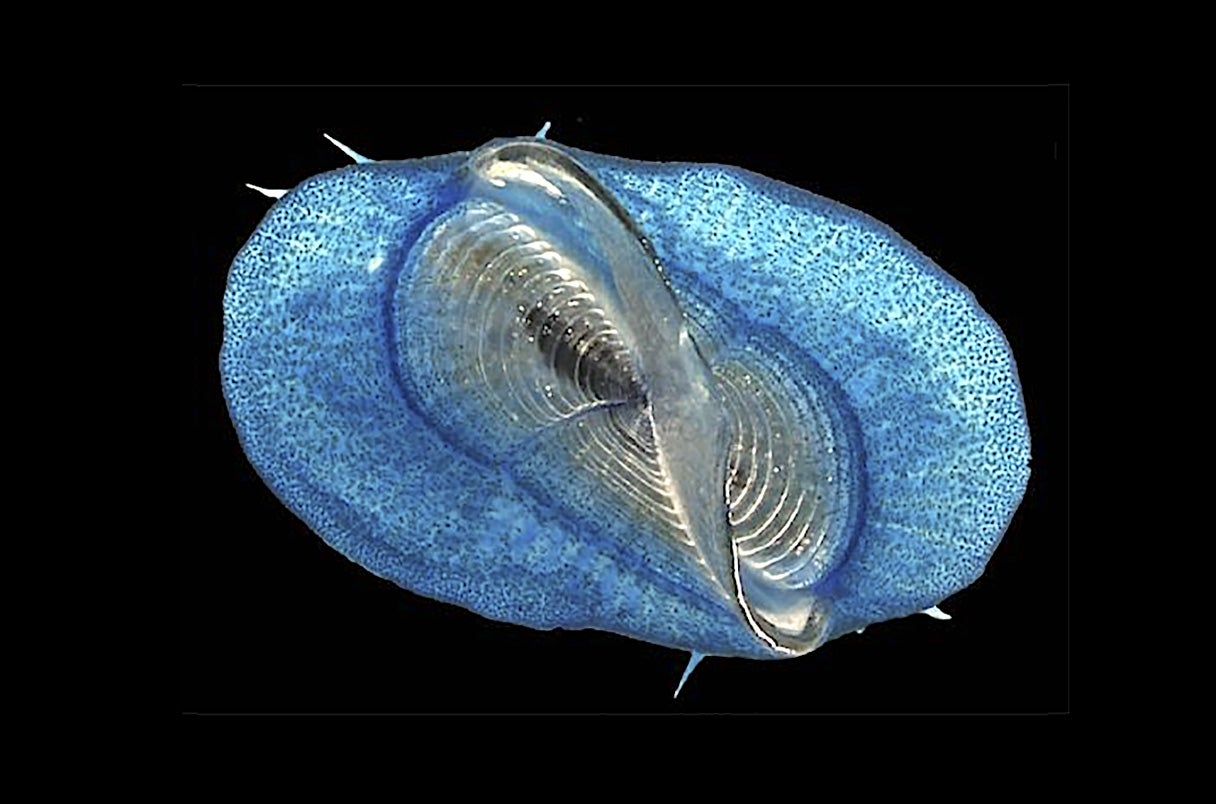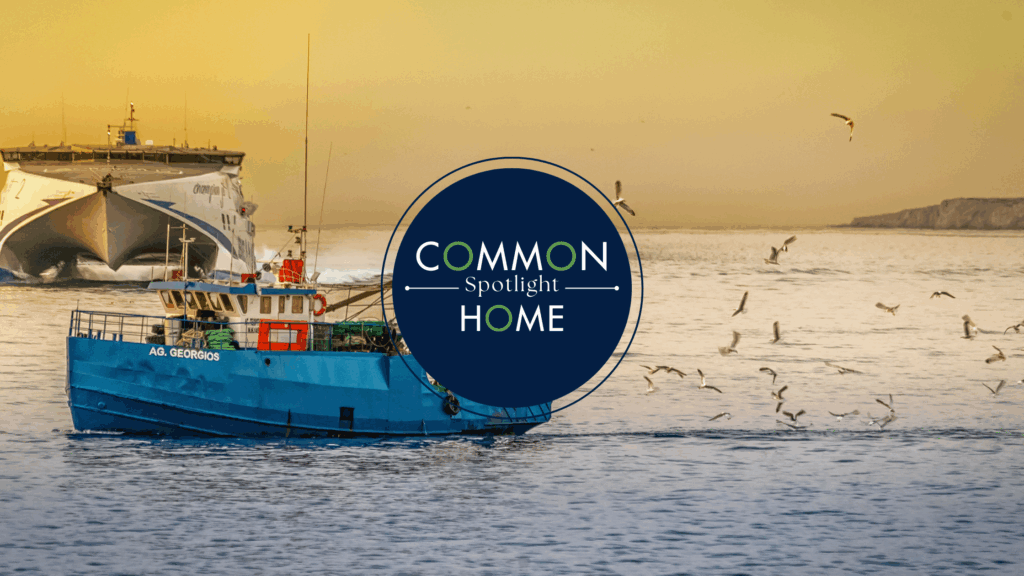My work aims to better understand how species interacting at the sea surface are potentially impacted by marine debris, including plastic, and how to mitigate that risk with science based management and policies.
From the Financial Crisis to the Frontlines of Ocean Conservation: How ECo Fellow Tom Iwanicki Sees the Forces Shaping Marine Biodiversity Loss
As part of the Earth Commons Fellowship Highlight Series, we spoke with ECo’s Dr. Tom Iwanicki, an ECo postdoctoral fellowship alumnus and current Smith Fellow.
Hi, Tom! Tell us about yourself and what you do.
I’m a sensory ecologist studying the neustonic zone, the brilliantly blue and beautiful jelly-like animals that wander the high seas by the wind and waves on the water’s surface. These animals, broadly called ‘neuston’, are an abundant and biodiverse community that are food for a whole host of sea birds, fishes, and turtles. Neuston co-occur with an increasing amount of ocean trash discarded either wilfully or accidentally by humans. I am studying how neuston may appear more or less like different categories of ocean trash resulting in the harmful consumption of plastics in threatened and endangered species.
What real-world challenges does your work aim to address or better understand?
As we transition from fossil fuels toward green energy production, the fossil fuel industry sees the production of plastics as an ‘off-ramp’ to maintain profitability. As such, plastics production has increased markedly in the last decade with accelerated production predicted in the years ahead. Plastics that make their way into the ocean may persist for decades or even centuries and pose a novel risk to marine life. My work aims to better understand how species interacting at the sea surface are potentially impacted by marine debris, including plastic, and how to mitigate that risk with science based management and policies.
Was there a moment that set you on this academic path? An a-ha moment, a mentor, a class, a childhood experience, something else?
I started my academic journey with a Bachelor of Science in Economics during the 2008 financial crisis. As the financial world buckled, I pivoted my coursework to the natural sciences. At the time, this felt like an escape as I found comfort and familiarity with nature.
End of carousel collection.
I became totally hooked by sensory biology after taking an animal behavior course that detailed the countless ways animals sense the world differently than us. I am fascinated by how animals sense the world around them and have spent a career studying light and animal vision in the ocean. Many animals can see ultraviolet and polarized light that are invisible to our naked eye; snakes can sense thermal signatures and their squirrel prey pump blood into and fluff up their tails to appear big and threatening; cricket ears are in their knees—with minute differences found between different species—and precisely tuned to find their chirping mates…I could go on!
Greed, hierarchy, and domination must give way to cooperation, democracy, and freedom if we are to realize a thriving biodiverse planet that we as a species depend on. Realizing this shift requires an interdisciplinary team to catalyze change and The Earth Commons can effectively act as that catalyst.
What tools or methods do you use to study how animals see the world?
Studying light and vision is inherently interdisciplinary. I draw on knowledge from disciplines as varied as physics, mathematics, oceanography, ecology, physiology, genetics, engineering, among others. My participation in international policy benefits from my background in higher education labor organizing and an abbreviated economics bachelor’s degree. For modeling how animals see, in particular, I have adapted a commercially available digital camera with 3D printed parts in collaboration with ECo colleagues Drs. Jones and Dooley to construct a full-spectrum camera capable of detecting light ranging from ultra-violet to red wavelengths. I take photographs of various animals and debris under laboratory conditions and use knowledge of the optics and sensitivity of animal eyes (namely sea birds and fish) to model how those visual systems detect the object of interest.
How has your perspective on environmental action evolved over the course of your career? Did your ECo Fellowship play a role in that evolution?
After a long career studying the ocean in a time of biodiversity loss, I now recognize the political motivations that threaten the natural world are deeply linked with those that precipitated the financial crisis. Greed, hierarchy, and domination must give way to cooperation, democracy, and freedom if we are to realize a thriving biodiverse planet that we as a species depend on. Realizing this shift requires an interdisciplinary team to catalyze change and The Earth Commons can effectively act as that catalyst.
End of carousel collection.
Thousands join the search for a mysterious jelly
Using observations from thousands of citizen-scientists, Tom has been investigating how left- and right-handed By-the-wind sailors navigate the world’s oceans and what that reveals about their global distribution
Follow Tom for more- Tagged
- Helm-lab


















